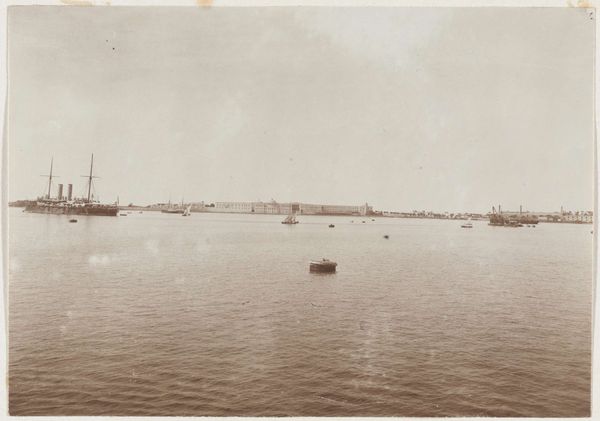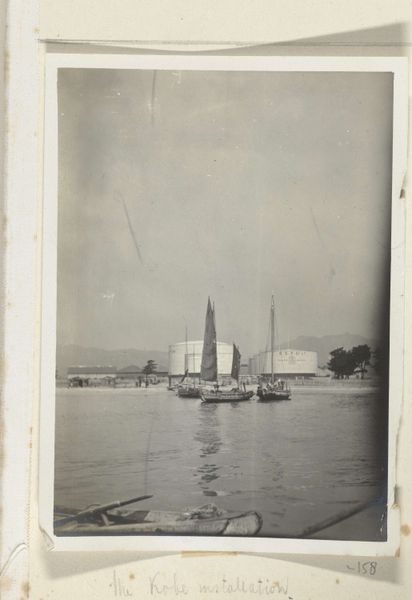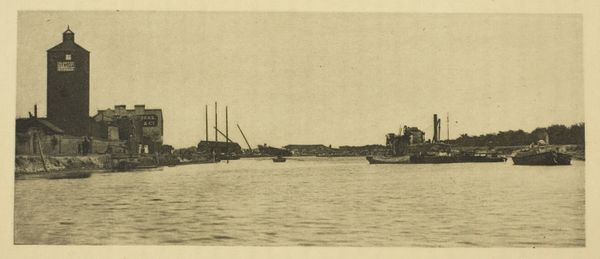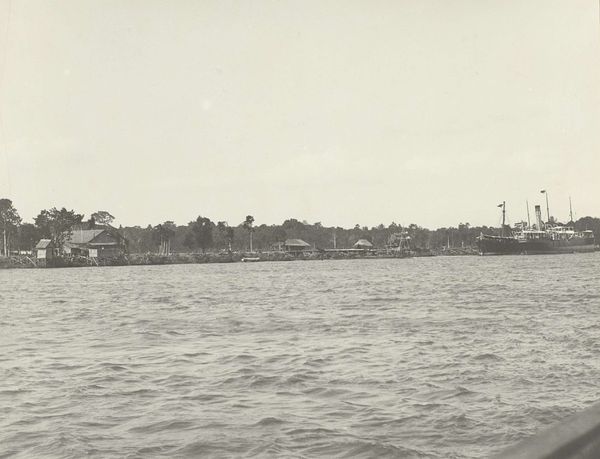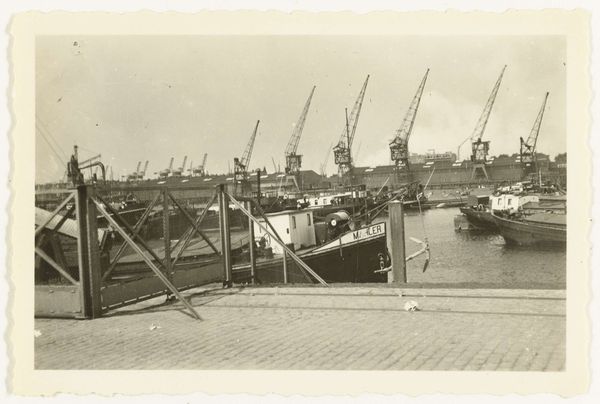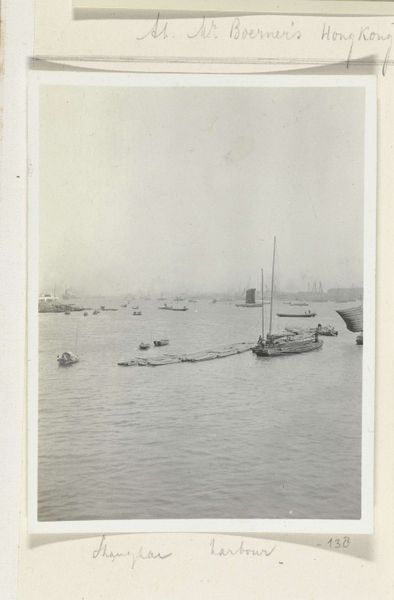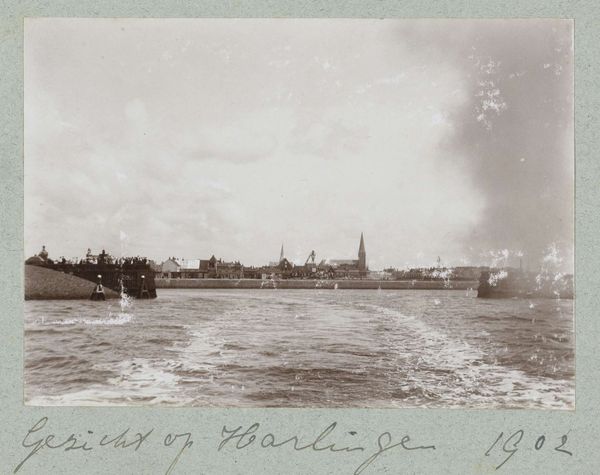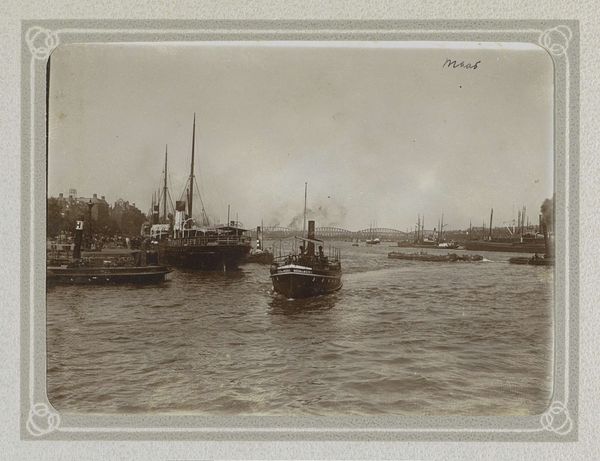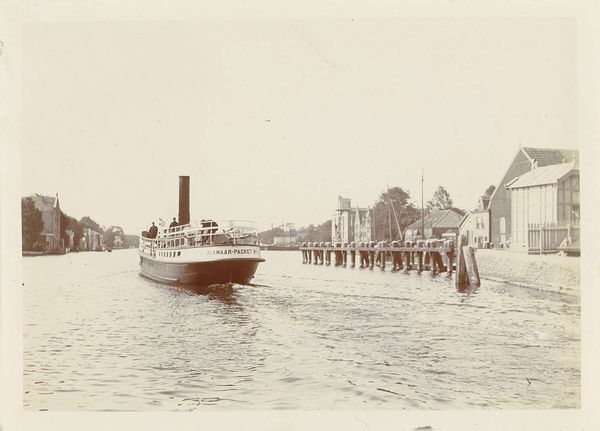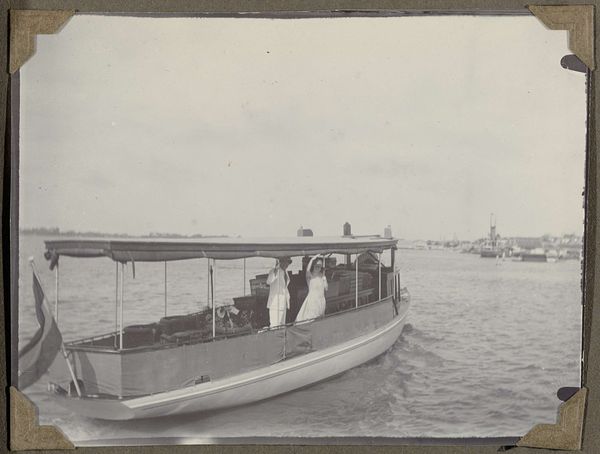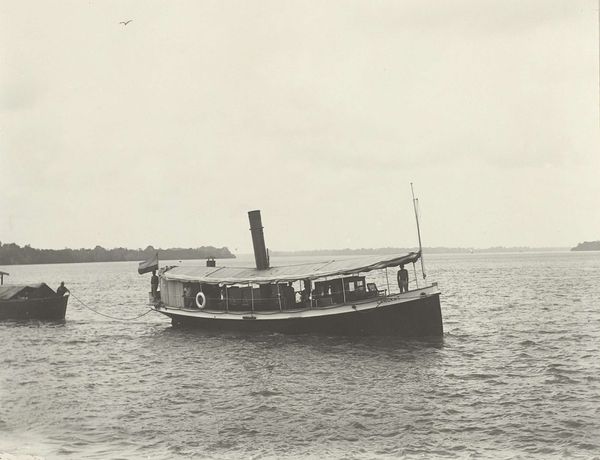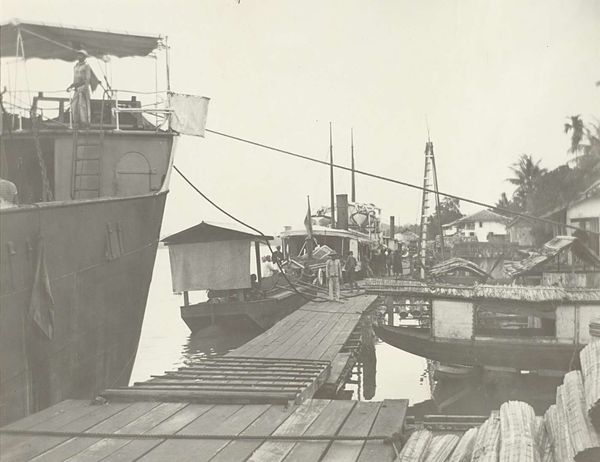
photography, gelatin-silver-print
#
black and white photography
#
landscape
#
outdoor photograph
#
photography
#
gelatin-silver-print
#
monochrome photography
#
cityscape
#
realism
#
monochrome
Dimensions: height 4.5 cm, width 6 cm
Copyright: Rijks Museum: Open Domain
Curator: The quietude of this photograph strikes me immediately. Editor: Indeed. Let's introduce our listeners to "Maas in Dordrecht," a gelatin-silver print taken sometime in the 1940s. It resides here at the Rijksmuseum. Curator: Gelatin-silver perfectly captures the textural gradients here—from the flat, glassy river to the slightly overexposed, mottled sky. There is almost a stark linearity to the whole composition as if an architect drew it, from the horizon to the details on the small steamer. Editor: I agree. It evokes a sense of post-war stillness. The photo was produced in the Netherlands while reconstruction occurred following World War II, and the presence of both the industrial structures on the left side and the traditional architecture of Dordrecht on the right could signal the beginning of the country's reconciliation between past and future. The photograph encapsulates a moment of reflection, a community navigating its course through a rapidly changing world, or more particularly, a shifting nation. Curator: Or is that duality also built into the tonality of the black-and-white printing? A conversation about value contrasts and an exercise of how to extract shapes from an ambiguous tonal palette. The formal concerns allow the photograph to achieve balance; that steamer occupies an ideal geometric place in the picture, like a figure in a landscape painting from centuries before. Editor: Perhaps. Though I tend to view these quotidian scenes of labor, whether that is shipping or production, as a sort of romanticization of Dutch resilience through what could otherwise read as potentially an ordinary industrial waterway. Who worked on these steamers, what kind of materials did they move, and what communities were connected? Curator: Those human elements aren’t explicitly present but what does emerge from the framing is a particular study in shapes, of horizontal versus vertical, the geometry and how the relationship of the formal elements provides visual satisfaction. Editor: Perhaps for the modern art consumer, that's true. For me, though, these questions remain as to how a photograph like this represents everyday struggles while ostensibly recording what could easily amount to nationalistic propaganda? Curator: It's a fascinating push and pull. It exemplifies how potent black and white photography can be as an artistic medium by achieving tonal excellence and capturing details within light. Editor: The photograph prompts us to meditate on broader social realities. Both, it seems, create different entry points that enrich our viewing experience.
Comments
No comments
Be the first to comment and join the conversation on the ultimate creative platform.
